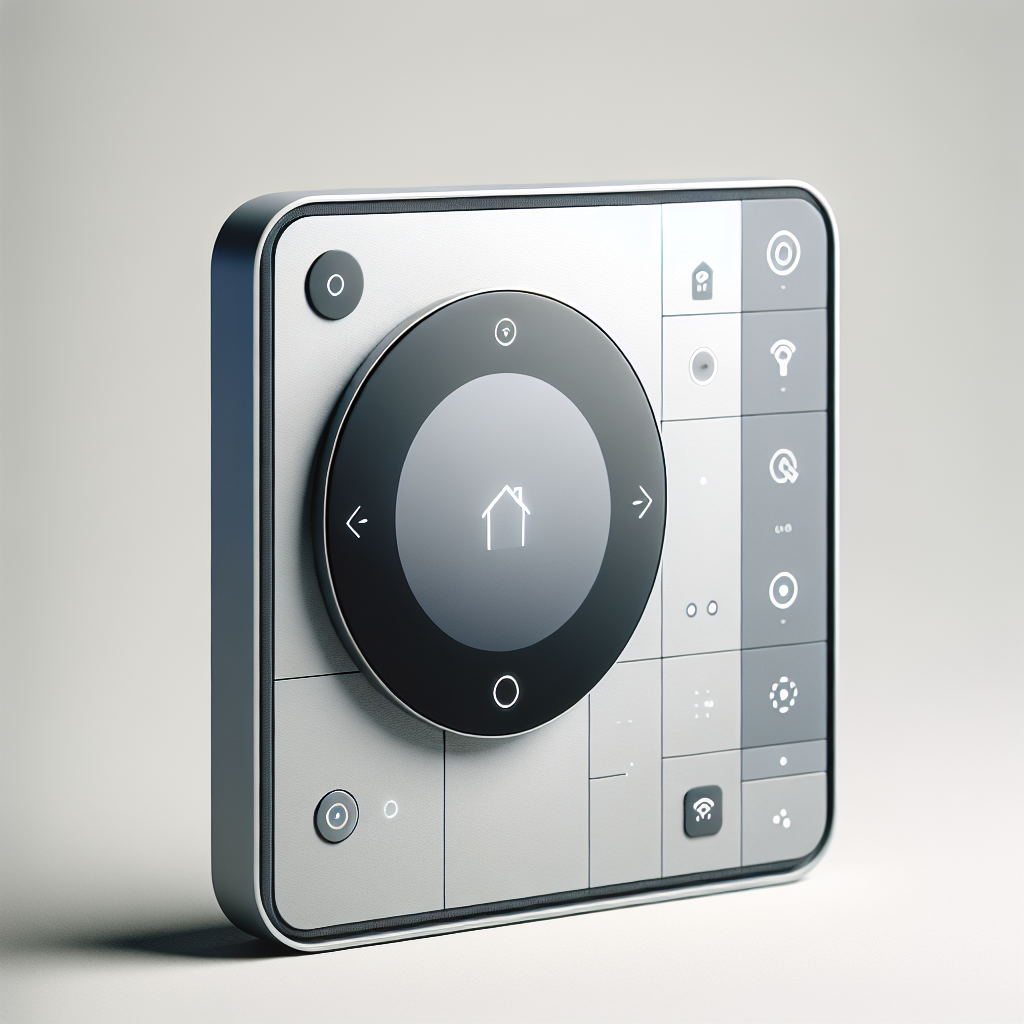Imagine walking into your dream home, where every task, from turning on the lights to adjusting the temperature, is effortlessly controlled with just a tap of your finger. With the rapid advancements in technology, home automation systems have become more accessible and affordable than ever before. But with countless options available, how do you know which one is the right fit for your specific needs? In this article, we will explore the key factors to consider when choosing a home automation system, empowering you to create the smart home of your dreams.

Factors to Consider
Budget
When choosing a home automation system, it’s important to consider your budget. Some systems can be quite expensive, while others are more budget-friendly. Take the time to research and compare prices to find a system that fits within your financial means. Remember to also consider any additional costs, such as installation fees or monthly subscription fees.
Compatibility with Existing Devices
Before investing in a home automation system, make sure to consider its compatibility with your existing devices. You may already have smart devices like lights, thermostats, or security cameras, and it’s important to ensure that the system you choose can integrate with them smoothly. Look for compatibility information provided by the manufacturer or ask for assistance from a professional if needed.
Scalability
Another important factor to consider is the scalability of the home automation system. As your needs and preferences change over time, you may want to add more devices or expand the functionalities of your system. Choose a system that allows for easy scalability and the addition of new devices to accommodate your future needs.
User-Friendliness
When selecting a home automation system, consider its user-friendliness. You want a system that is easy to install, set up, and navigate. Look for systems that offer intuitive interfaces and provide clear instructions. If you’re not very tech-savvy, you may also want to consider systems that come with professional installation services.
Security
Home security is of utmost importance, so it’s crucial to choose a home automation system that prioritizes security. Look for systems that offer strong encryption and secure communication channels to protect your data and devices. Additionally, consider systems that offer features like two-factor authentication and real-time notifications for added security.
Customization Options
Every home is unique, and your automation system should be able to adapt to your specific needs and preferences. Look for systems that offer customization options, allowing you to personalize your automation routines, create schedules, and adjust settings to suit your lifestyle. The more customizable the system, the better it will be able to meet your individual requirements.
Types of Home Automation Systems
Hub-Based Systems
Hub-based systems, also known as centralized systems, require a central hub or controller to connect and communicate with various smart devices. This hub serves as the main control point for your entire home automation network. The advantage of a hub-based system is that it allows for better integration and coordination between different devices, offering a seamless home automation experience.
Cloud-Based Systems
Cloud-based systems utilize the power of the internet and data centers to control and manage your home automation devices. These systems rely on remote servers, allowing you to control and monitor your devices from anywhere via a smartphone or tablet. Cloud-based systems offer the convenience of remote access and control, but they also depend on a stable internet connection.
Stand-Alone Systems
Stand-alone systems, also known as decentralized systems, operate independently without the need for a central hub or internet connection. Each device in a stand-alone system functions autonomously and can be controlled individually. Stand-alone systems are typically simpler to set up and more cost-effective, but they may lack the seamless integration and advanced features offered by hub-based or cloud-based systems.
Popular Home Automation Brands
Google Nest
Google Nest offers a wide range of smart home devices, including thermostats, cameras, speakers, and doorbells. These devices are known for their seamless integration with the Google ecosystem and compatibility with Google Assistant. Google Nest products are designed to be user-friendly and offer advanced features like facial recognition, voice control, and energy-saving capabilities.
Amazon Echo
Amazon Echo devices, powered by Alexa, have gained immense popularity in the home automation market. With voice control as a standout feature, Amazon Echo can easily integrate with various smart devices and services. Whether you want to control your lights, play music, set reminders, or shop online, Amazon Echo devices can do it all, making them a versatile choice for home automation.
Apple HomeKit
Apple HomeKit provides a comprehensive ecosystem for home automation integration. With the Home app on your iPhone or iPad, you can control and automate a wide range of HomeKit-compatible devices. The advantage of HomeKit is its emphasis on privacy and security, with end-to-end encryption and strict data protection measures in place. Apple devices like the iPhone, iPad, or Apple Watch can be used as controllers for your HomeKit-enabled devices.
Samsung SmartThings
Samsung SmartThings is an IoT platform that enables seamless connectivity and control of various smart devices. With SmartThings, you can monitor and control your lights, thermostats, door locks, cameras, and more, all from a single app. The integration with the Samsung ecosystem allows for interoperability with other Samsung devices, offering a cohesive smart home experience.
Hubitat
Hubitat offers a local and privacy-focused home automation system. With Hubitat’s hub, you can connect and control a wide range of smart devices from different manufacturers. The advantage is that your automation is processed locally, without relying on the cloud or internet, providing enhanced privacy and security. Hubitat also offers advanced customization options for creating complex automation routines.
Vivint
Vivint is a professionally installed home automation system that offers a comprehensive range of smart devices and services. With Vivint, you can control your lights, thermostats, security cameras, and more through the Vivint app or a smart home panel. Vivint’s professional installation ensures a seamless setup, and their 24/7 monitoring provides added security and peace of mind.
Features and Functions
Lighting Control
One of the key features of a home automation system is lighting control. With the ability to control your lights remotely or automate them based on schedules or triggers, you can enhance energy efficiency and create the perfect ambiance for any occasion. Dimming, color-changing, or motion-activated lights can also be integrated into your automation system for added convenience and customization.
Heating and Cooling
Home automation systems can also integrate with your heating, ventilation, and air conditioning (HVAC) systems to optimize energy usage and comfort. With temperature sensors and scheduling capabilities, you can automate the heating and cooling of your home based on occupancy or time of day. Smart thermostats can learn your preferences and adjust temperature settings accordingly, resulting in energy savings and improved comfort.
Security and Surveillance
Keeping your home secure is a top priority, and home automation systems offer a variety of security and surveillance features. These can include smart locks, security cameras, door/window sensors, and motion detectors. With the ability to remotely monitor and control these devices, you can enhance the security of your home and receive real-time alerts in the event of any unusual activities.
Entertainment Control
With a home automation system, you can streamline and simplify your entertainment experience. Control your audio and video devices, such as TVs, speakers, streaming devices, and gaming consoles, with a single remote or through voice commands. Integration with popular streaming services and voice assistants allows for seamless control and access to your favorite entertainment content.
Appliance Control
Home automation systems can also bring convenience and efficiency to your daily household chores. With the ability to control appliances such as refrigerators, ovens, washing machines, or robotic vacuums, you can automate tasks and monitor their status remotely. For example, you can preheat your oven, start a load of laundry, or receive notifications when your refrigerator needs attention.
Smart Home Voice Assistants
Voice assistants play a central role in home automation systems, providing hands-free control and interaction with your smart devices. Whether it’s Amazon Alexa, Google Assistant, or Apple Siri, these voice assistants can understand and execute your commands, control various devices, provide information, and even perform tasks like ordering groceries or setting reminders. Voice assistants greatly enhance the usability and convenience of your home automation system.

DIY vs Professional Installation
Advantages of DIY Installation
DIY installation is a popular choice for those who prefer to set up their home automation system themselves. It offers several advantages, including cost savings, flexibility, and the satisfaction of completing the installation on your own. DIY installation allows you to customize and tailor the system to your specific needs, without relying on professional assistance. Additionally, many home automation systems provide step-by-step guidance and resources to assist in the installation process.
Advantages of Professional Installation
Professional installation provides a hassle-free and expertly executed setup for your home automation system. Trained technicians have the knowledge and experience to ensure that all devices are properly installed, integrated, and optimized for maximum performance. Professional installation may also include a thorough assessment of your home’s infrastructure and offer guidance on device placement and optimal network connectivity. This option is particularly beneficial for those who are not tech-savvy or prefer a seamless, professional experience.
Integration with Other Smart Devices
Smartphones and Tablets
Integrating your home automation system with smartphones and tablets allows for convenient control and monitoring of your devices from anywhere. Most home automation systems offer dedicated mobile apps that provide a user-friendly interface to interact with your devices. Whether you’re at home or on the go, you can easily adjust settings, receive alerts, and automate routines using your smartphone or tablet.
Smart Speakers
Smart speakers add an extra layer of convenience by providing voice control functionality to your home automation system. Whether it’s an Amazon Echo with Alexa, a Google Nest speaker with Google Assistant, or an Apple HomePod with Siri, smart speakers allow you to control your devices, play music, ask questions, and perform various tasks using voice commands. The integration of smart speakers with your home automation system enhances the hands-free and intuitive nature of controlling your smart devices.
Smart TVs
Integrating your home automation system with your smart TV allows for a seamless entertainment experience. With the ability to control your TV, streaming services, and sound system through your home automation system, you can create personalized routines and automations for your media setup. For example, you can set the lighting to dim when you start watching a movie or have your TV turn off automatically when you leave the house.
Smart Locks
Smart locks provide enhanced security and convenience by allowing you to lock and unlock your doors remotely. Integration with your home automation system allows for seamless control of your smart locks, either through your smartphone, tablet, or voice assistant. You can create automation routines that automatically lock the doors when you leave or unlock them when you arrive home, providing a keyless and secure entry to your property.
Smart Thermostats
Integrating your home automation system with a smart thermostat allows for energy-efficient control of your heating and cooling systems. With temperature sensors and occupancy detection, your smart thermostat can adjust the HVAC settings based on your preferences and presence. Additionally, you can create energy-saving schedules, monitor energy consumption, and receive notifications about potential issues, all through the integration with your home automation system.
Remote Access and Control
Mobile Apps
Most home automation systems provide dedicated mobile apps that allow for remote access and control of your devices. These apps typically offer a user-friendly interface, allowing you to monitor and adjust settings, receive notifications, and automate routines from anywhere using your smartphone or tablet. Whether you’re at work, on vacation, or simply in another room, you can have full control over your home automation system at your fingertips.
Web Portals
In addition to mobile apps, some home automation systems offer web portals that can be accessed through a browser on a computer or tablet. Web portals provide an alternative interface for managing your home automation system, offering a larger screen and additional features. Web portals are particularly useful for those who prefer a desktop experience or need to access their system from devices without mobile app support.
Expandability and Compatibility
Ability to Add New Devices
When choosing a home automation system, consider its ability to add new devices. As your needs and interests evolve, you may want to integrate additional smart devices into your system. Look for systems that have compatibility with a wide range of devices and manufacturers, as this will give you more flexibility and options for expanding your smart home setup in the future.
Interoperability with Popular Brands
Compatibility with popular brands is also essential when considering expandability. Some home automation systems have partnerships and integrations with well-known brands, allowing for seamless interoperability. This means that certain devices and services from these brands can easily work together within your home automation system. Check the compatibility information provided by the manufacturer or inquire about compatibility with specific brands before making a decision.
Customer Support and Warranty
Technical Support
When investing in a home automation system, it’s important to consider the availability and quality of technical support. Look for systems that offer comprehensive customer support, whether it’s through phone, email, or live chat. Reliable technical support ensures that you can get assistance whenever you encounter any issues or have questions about your system. Additionally, check for resources like user guides, FAQs, and online communities that can provide additional support and troubleshooting help.
Warranty Coverage
Warranty coverage is another crucial factor to consider when choosing a home automation system. A warranty provides peace of mind and protection in case of any defects or malfunctions with your devices. Look for systems that offer a generous warranty period and clear warranty terms. Take note of any limitations or exclusions, such as certain types of damage or unauthorized modifications, to understand the full extent of the warranty coverage.
In conclusion, choosing the right home automation system requires careful consideration of various factors. Assess your budget, compatibility with existing devices, scalability, user-friendliness, security, customization options, and the specific features and functions you desire. Research popular home automation brands like Google Nest, Amazon Echo, Apple HomeKit, Samsung SmartThings, Hubitat, and Vivint to determine which aligns best with your needs. Consider the pros and cons of hub-based, cloud-based, and stand-alone systems. Explore integration possibilities with other smart devices, such as smartphones, smart speakers, smart TVs, smart locks, and smart thermostats. Evaluate the options for remote access and control through mobile apps and web portals. Take into account the expandability and compatibility of the system with new devices and popular brands. Lastly, consider the availability of customer support and the warranty coverage offered by the manufacturer. By considering these factors and thoroughly researching your options, you can select the perfect home automation system that meets your specific requirements and enhances your everyday life.

